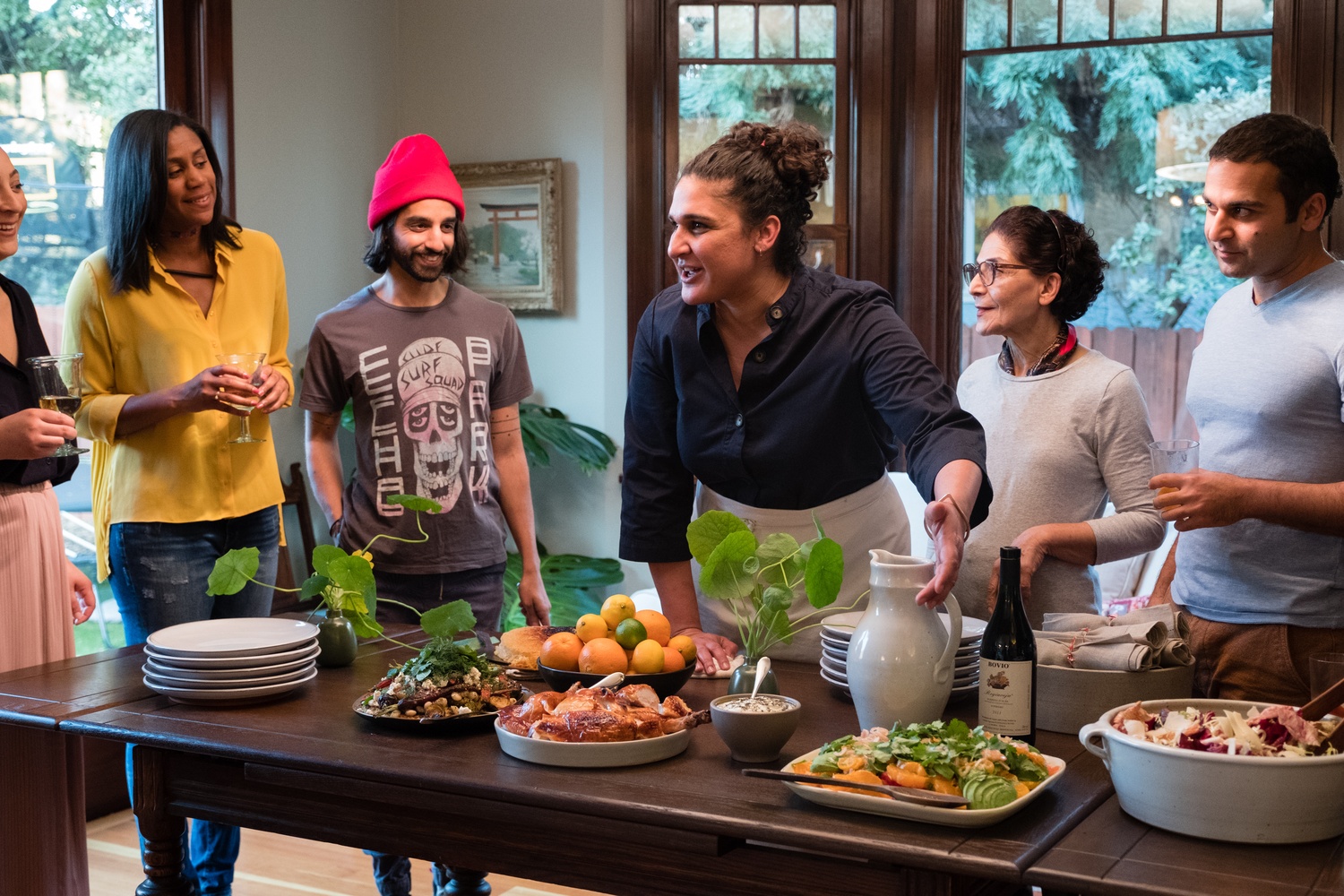
News
Harvard Alumni Email Forwarding Services to Remain Unchanged Despite Student Protest

News
Democracy Center to Close, Leaving Progressive Cambridge Groups Scrambling

News
Harvard Student Government Approves PSC Petition for Referendum on Israel Divestment

News
Cambridge City Manager Yi-An Huang ’05 Elected Co-Chair of Metropolitan Mayors Coalition

News
Cambridge Residents Slam Council Proposal to Delay Bike Lane Construction
‘Salt Fat Acid Heat’ Is Human-Scale Cooking


Over the last couple of years, Netflix has squeezed small-screen content out of almost every cultural access point imaginable. Their newest wheelhouse, it seems, is cooking — not the “Top Chef” shows of yore, but rather high-production, globetrotting enterprises, serving up everything from mini-biographies of acclaimed chefs (“Chef’s Table”) to docuseries of affable American dudes eating their way around the world (“Somebody Feed Phil”). “Salt Fat Acid Heat” is yet another gorgeous Netflix food show. Still, it somehow manages to carve its own niche in a well-worn genre. This is Food Network for the highbrow visual consumer, instructional television delivered in a sumptuous, vaguely narrative package. No matter how fed up one has become with the Netflix content machine, “Salt Fat Acid Heat” is hard to hate.
Based on Samin Nosrat’s acclaimed cookbook of the same name, the show follows Nosrat through Italy, Japan, Mexico and California as she seeks to define good cooking by the mastery of the eponymous four simple properties. The premise here — that in each country Nosrat is embraced by her established network of friendly artisans, who introduce her to the rich traditions of local parmesan, miso, or Yucatán honey — would read as classic American cultural colonialism if Nosrat weren’t so warmly charming and decidedly unpretentious. An alum of famed Berkeley restaurant Chez Panisse, the chef expresses every inch of her love for flavor in her grinning face. She is ridiculously fun to watch — in the first episode, the camera catches her from all angles as she crunches on some homemade focaccia bread and simultaneously exhibits the full spectrum of human pleasure.
What makes Nosrat such a compelling candidate for the people’s chef is her willingness to be imperfect. In “Acid,” she readily admits that she is not great at shaping homemade tortillas. In a relatively climactic unveiling of her classic at-home roasted chicken in “Heat,” she pulls out an unevenly cooked bird, then simply explains the problem, adjusts its placement in the oven, and jovially carries on with the meal. Nosrat is a wide-eyed, millennial Martha Stewart. Her kitchen is a safe space, and her teaching is never overly didactic. We learn with her, not from her. The thesis here is somewhat radical: The rudiments of home cooking deserve as much production value as James Beard award-winning chefs.
Indeed, the cinematography is spellbinding, and certainly worthy of a Netflix budget. There are, of course, the requisite rolling Italian vistas, the glistening California architecture, the bustling Japanese markets, as well as the boiling vats of pasta, a juicy squeeze or two of citrus. But the real star of each shot is always Nosrat’s exquisitely powerful hands, as she kneads dough or arranges veggies just so on a roasting platter.
Nosrat never gets political, but she knows what her show represents. Her Iranian heritage casually but consciously imbues her experiences with a distinct perspective, in cooking and otherwise. In “Acid,” she describes putting yogurt on everything as a child to cut the high natural acidity in Persian food. In the final episode, she invites her mother to come help her make tahdig, a traditional Persian dish, for a dinner party. And in a charmingly illustrated aside, she describes the foundational experience of eating her first Thanksgiving dinner with a white friend’s family, and heaping tart cranberry sauce on the bland turkey and stuffing in an effort to make it palatable. She is a classic American chef — on her own terms.
Nosrat’s chef persona is defined by a generosity of spirit, and each episode ends accordingly with a cozy dinner party. “Cooking has never been about the food,” she reminds us in voice-over. “It’s about what happens at the table.” She is preaching the gospel of home cooking — the beauty of just a few simple ingredients, prepared well, shared with good friends. Miraculously, her sincerity manages to convey this trite message in a truly poignant way. And soul-nourishing food makes for soul-nourishing TV.
With Nosrat as self-help protagonist and cooking instructor, “Salt Fat Acid Heat” does manifest as more of an author’s book talk than full-fledged documentary television. That the show is structured episodically according to chapters of its source text does nothing to undercut the lingering feeling that Nosrat is basically taking us on a live-action, anecdotal tour of her cookbook.
Yet the show is delightful, and certainly merits a watch on its own. The question then becomes whether the cookbook itself, and future such projects, will still merit a read. Why read a book, one might wonder, when you can watch a TV show that has all the information and more? It is somewhat startling to consider, but as Netflix continues to blur its definition of television, its tentacles are working to conglomerate all consumable avenues of culture into swaths of mega-media — comprehensive daily talk shows, serial sagas with novelistic tendencies, visual cookbooks. Sure, this maximalist approach can produce gorgeous multimedia works of great complexity.
But we also run the risk of losing what makes individualized media special. If “Salt Fat Acid Heat” is a souped-up visual cookbook, then what becomes of the real cookbook? Of any cookbook? One can only hope that these underdog media manage to chug along in the looming shadow of an ever-present Netflix budget, ready and willing to snap them up and churn them out.
Want to keep up with breaking news? Subscribe to our email newsletter.
